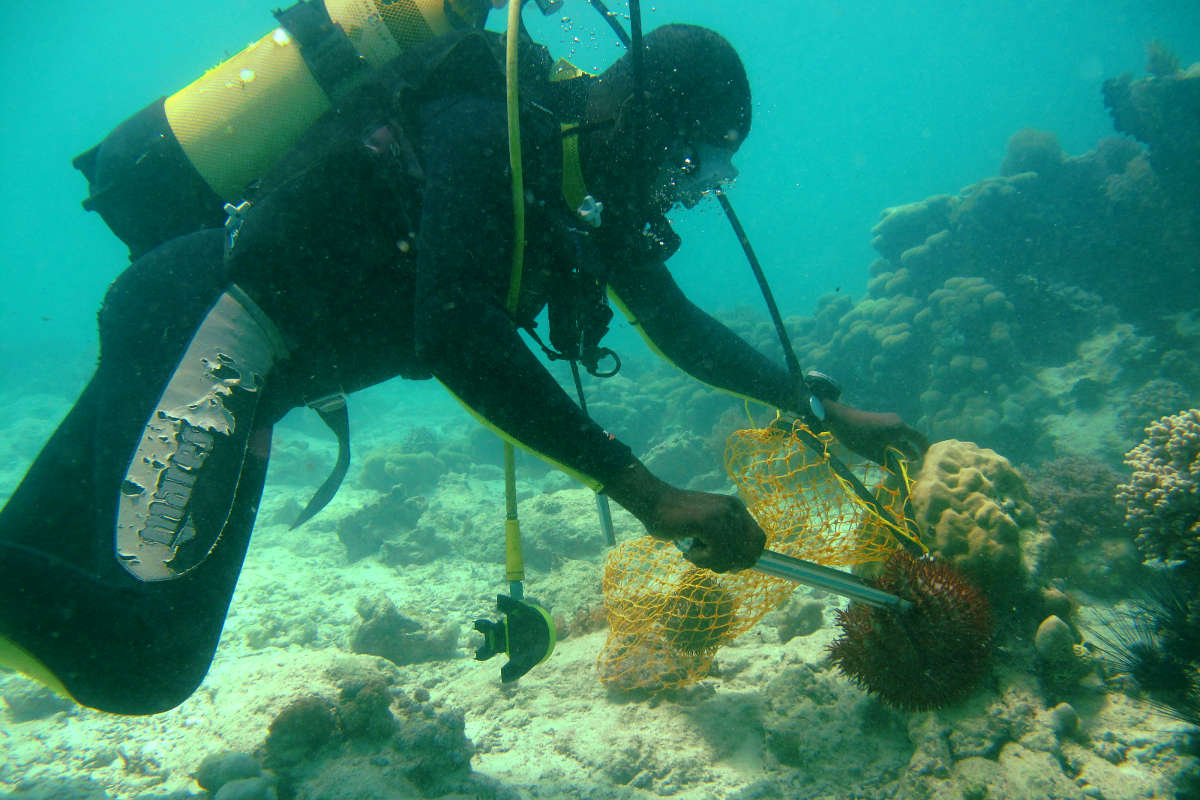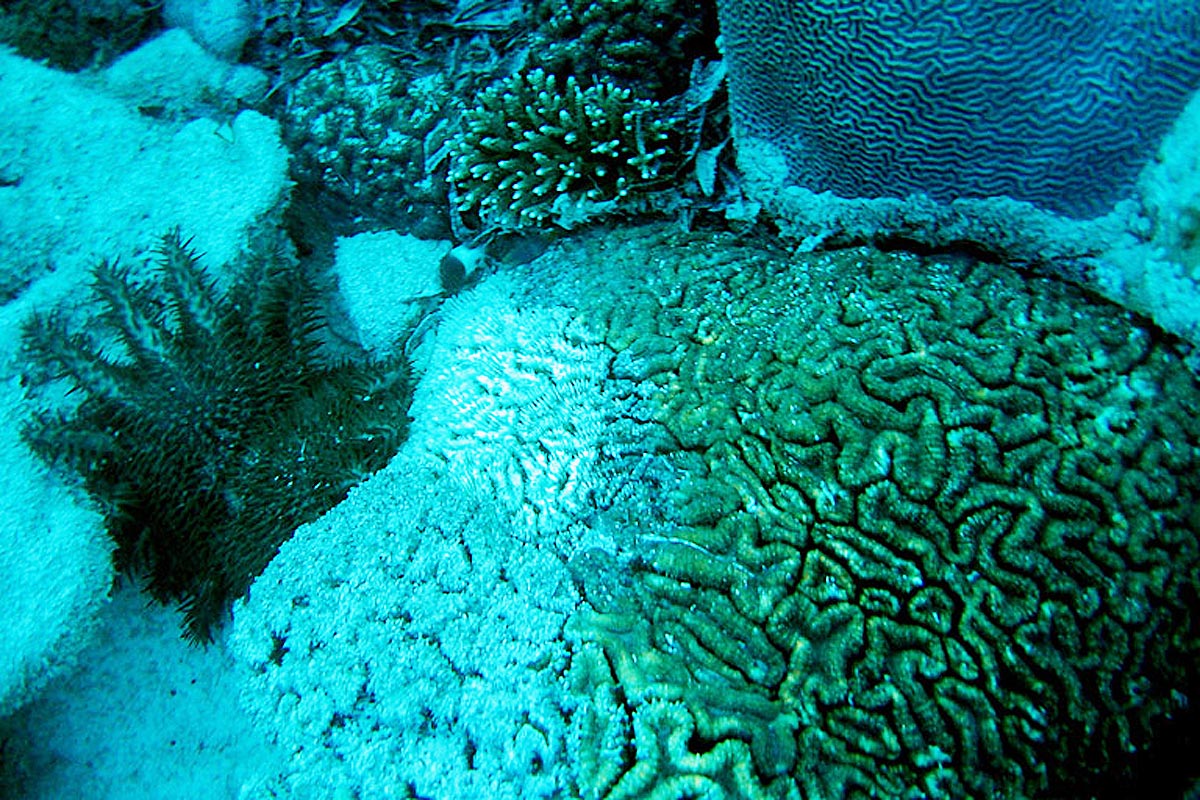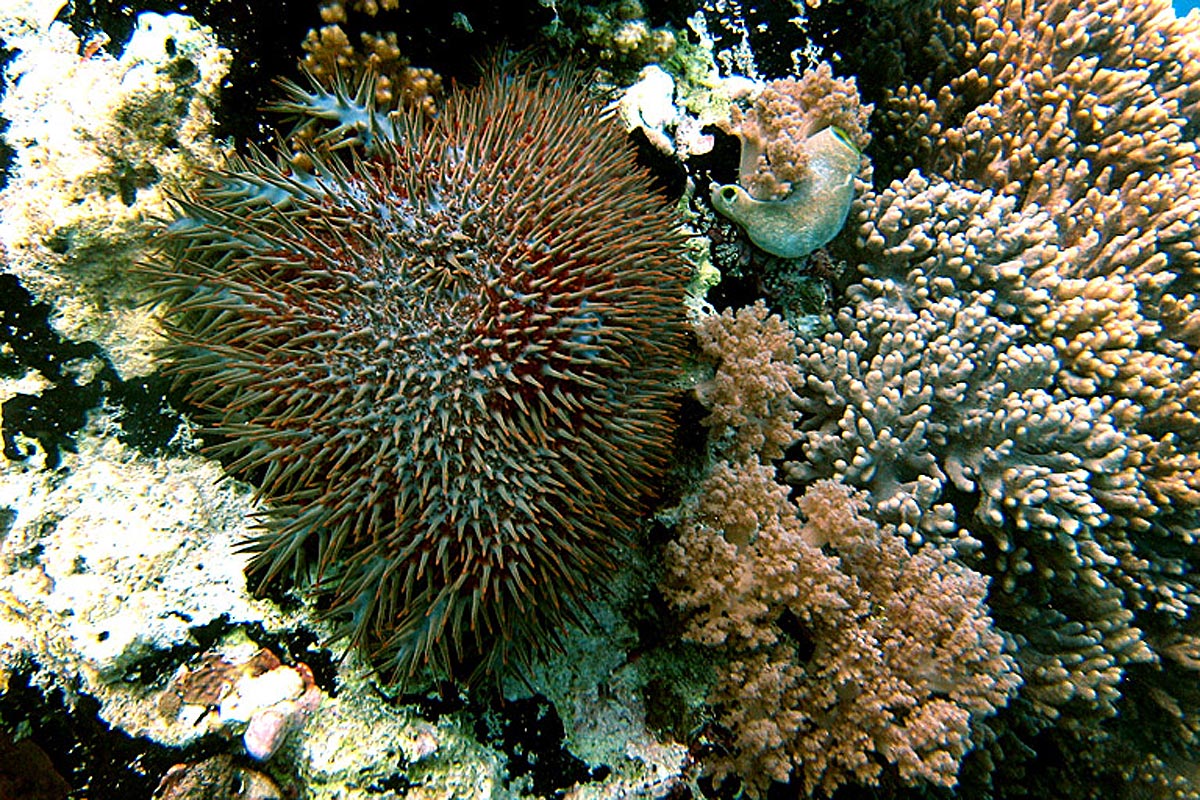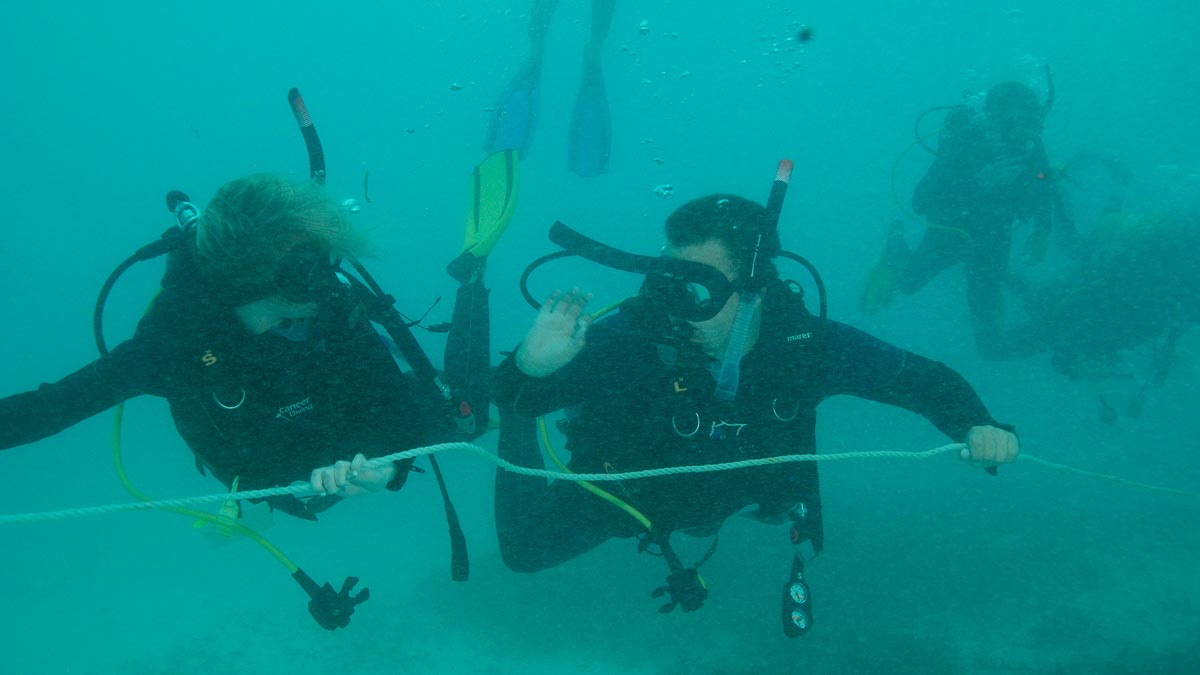Monitoring of reefs
We monitor local coral reefs and look for signs of stress or damages. Often it is chronic stress that limits the reef's capacity for self-regeneration. We can only take protective measures if we notice changes at an early stage.
The monitoring of the reefs includes:
- the detection of an impending crown of thorns starfish epidemic
- the recognition of signs of coral bleaching
- the sighting of dynamite fishers
- identification of other threats (e.g. trawls caught on a reef)
In many cases we can't do much more than document the problems and report them to CORDIO (Coastal Oceans Research and Development East Africa). But there are also pests that can attack the corals. Thanks to regular monitoring dives we can intervene in time.

What we do
We conduct regular monitoring dives, document changes and intervene if necessary and possible. A few examples:
In 2009, when an increase in the number of crown-of-thorns starfish was detected, we carried out an inventory of the population. Today we remove the coral pests as soon as we find more than 5 per dive.
Since 2013 we have been successfully installing professional anchor buoys to prevent damage to corals and to better mark marine protected areas.
When El Niño caused massive damage in 2016, we documented the damage as part of the NOAA Coral Reef Watch initiative. Documenting such damage contributes to a better understanding of the effects of the El Niño phenomenon.
2017 we launched a new Zanzibar Coral Reef Monitoring initiative launched



